Moulding gold: in the studio with the Olympic and Paralympic medal makers
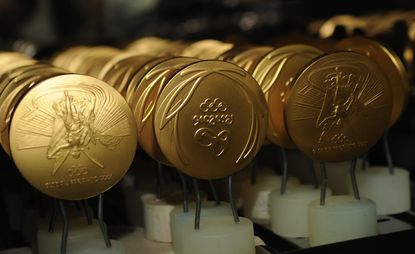
With Team GB neck-and-neck with China and closing in on the USA's enviable overall lead (maybe), the only things tearing us away from the Rio 2016 Olympic medal table this summer are the medals themselves.
The Olympic Organising Comittee design team has enlisted the help of the Royal Brazilian Mint (who produced medals for the 2011 Military World Games and 2007 Pan-American Games, both held in Rio) to craft the 5,130 Olympic and Paralymic medals needed for the 2016 games.
Sports fans like us will have noticed many athlete's podium-side comments on the weight and size of their new neckware. Each medal (whether gold, silver or bronze) weighs a hefty 500g, and is over 1cm thick in the middle. The 2016 medals are domed, thinning to 6mm at the edges – the first Olympic medals to taper in this way. Despite this, there's still plenty of space around the rim of each medal for the all-important discipline to be laser-embossed.
Rio 2016 is keen to be seen as the 'sustainability games', and the medal-making has been held to strict environmental criteria. All the gold used in production is entirely free of mercury, and is traceable from extraction to refining. The silver model is made from 30 per cent recycled materials, and 40 per cent of the bronze medal started life as industrial waste.
As far as the engraving designs go, the reverse remains unchanged since the Athens Olympics in 2004, when Greek couture jeweller Elena Votsi chose Nike, the winged godess of victory, to be the carved on the back. Flip it over and the simple Rio 2016 logo (which is markedly less contentious than the London 2012 one) is suspended between figurative, interlinking laurel leaves.
The Paralympic medals, although no different in materials and design, feature an additional innovation. Each medal has a device inside, filled with steel balls, which vibrate, making a noise when the medal is shaken, allowing visually impaired athletes to recognise whether they're gold, silver or bronze (gold has the loudest noise, bronze the quietest).
Sustainability, materials, craft and design all factor in making these medals the most exclusive pendants on the planet. But they're more than mere baubles – they are symbols of otherwoldly sporting achievement, worthy of the goddess depicted on the reverse. As Brazilian Mint's Lara Amorelli concludes, 'These medals represent the high point of the career of an athelete who is dedicated to reach the podium. When this happens, it is only fair that the medal symbolises their achievement, and for this reason, we seek to produce pieces of rare artistic beauty.'

This year, the emphasis is firmly on sustainability. The pure gold, pictured here, is completely mercury-free, as well as socially responsible. All suppliers were checked for compliance with environmental and labour laws
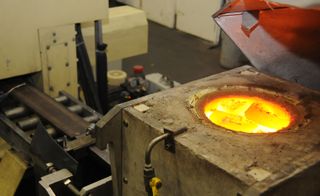
The metallurgy process begins with the creation of the alloy, and the molten metal reaches temperatures of over 1,000C°
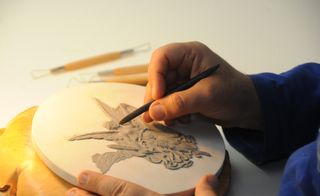
A team of artisans were employed to hand carve the goddess of victory, Nike, on the reverse of the medal

During the coinage process, the logo image is stamped firmly onto the medal base. The process is repeated three times to ensure maximum accuracy, and the final time is accompanied by a matte finish to highlight the reliefs in the artwork
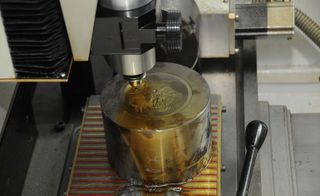
After the coinage process is complete, the edges of the medal are smoothed and finessed and a cavity is embedded, in which the spring-pin will attach the ribbon
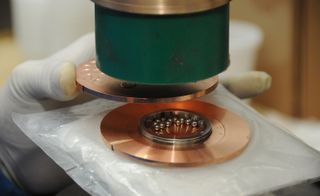
The Paralympic medals differ to their Olympic counterparts only in their unique, audio-recognition device, seen here. Two coins of metal are fused together over a collection of steel spheres, which vibrate when shaken to indicate the level of award achieved
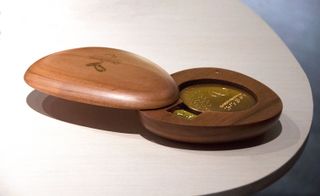
The finishing touches are the medal boxes, which are beautiful designed objects in their own rights, and continue the theme of sustainability. The pebble shaped cases, with a rotating lid, are made of responsibly sourced walnut
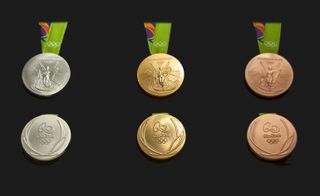
The entire medal-making process took over a year, involving over 100 employees, including artists, researchers, sustainability engineers and craftsmen
INFORMATION
For more information, visit the Rio 2016 website
Photography courtesy Royal Brazilian Mint
Wallpaper* Newsletter
Receive our daily digest of inspiration, escapism and design stories from around the world direct to your inbox
Elly Parsons is the Digital Editor of Wallpaper*, where she oversees Wallpaper.com and its social platforms. She has been with the brand since 2015 in various roles, spending time as digital writer – specialising in art, technology and contemporary culture – and as deputy digital editor. She was shortlisted for a PPA Award in 2017, has written extensively for many publications, and has contributed to three books. She is a guest lecturer in digital journalism at Goldsmiths University, London, where she also holds a masters degree in creative writing. Now, her main areas of expertise include content strategy, audience engagement, and social media.
-
 Elias Sime reflects on the destructive nature of technology in Venice
Elias Sime reflects on the destructive nature of technology in VeniceIn his solo show ‘Elias Sime: Dichotomy ፊት አና ጀርባ’ at the Venice Biennale 2024, the artist spotlights technology's destructive nature for humans and the environment
By Gameli Hamelo Published
-
 Knoll presents Willo Perron sofa at Salone del Mobile 2024, 'a piece that can stay with you forever'
Knoll presents Willo Perron sofa at Salone del Mobile 2024, 'a piece that can stay with you forever'Salone del Mobile 2024: the ‘Pillo’ sofa by Willo Perron for Knoll is the California-based designer’s first piece for the American brand, prioritising comfort and timeless usability
By Rosa Bertoli Published
-
 Nuova wants to 'bring time travel to the world' with their debut at Milan Design Week
Nuova wants to 'bring time travel to the world' with their debut at Milan Design WeekCalifornian design studio Nuova has been working behind closed doors for some of the biggest names in luxury and tech. The studio makes its public debut at Milan Design Week 2024, and take visitors on a journey back to 1971
By Laura May Todd Published